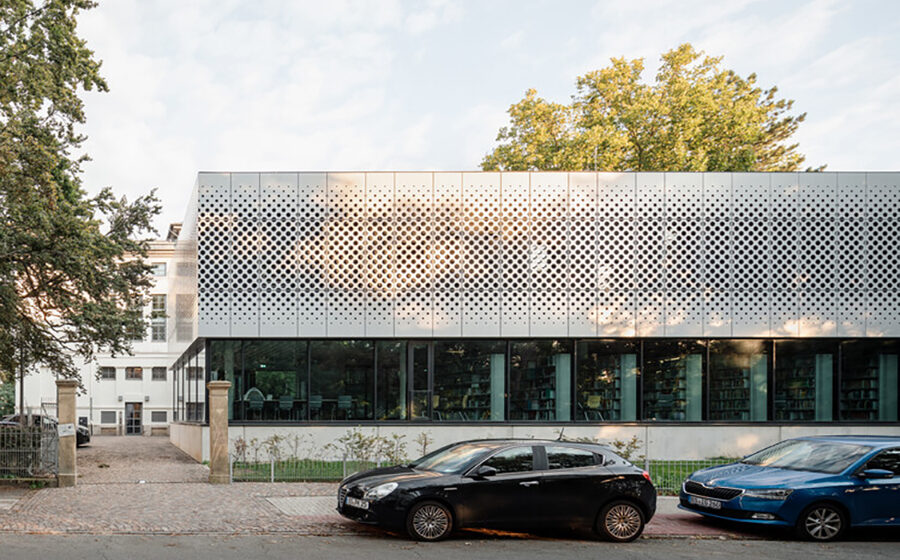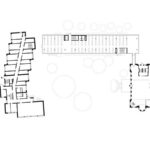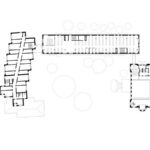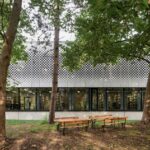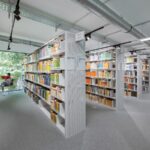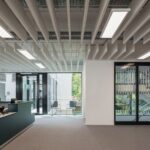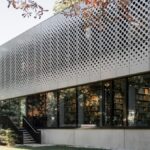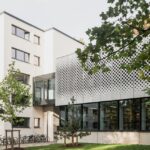Sehw Architektur’s visionary design for the Georg-Eckert Campus of the Leibniz Institute for Educational Media in Braunschweig redefines the intersection of heritage preservation, sustainability, and architectural innovation. Through the careful integration of historical structures, modern interventions, and sustainable practices, the campus emerges as a dynamic hub for educational research, nestled within a vibrant natural landscape.
Blending Tradition with Modernity: Architectural Harmony
Central to the project is the restoration and adaptation of Villa von Bülow, a neoclassical gem from the 19th century, listed as a historical monument. Alongside, the former nurses’ residence, dating back to the 1970s, undergoes a transformation into an administrative building. A delicate glass bridge serves as a seamless link between old and new, fostering a dialogue between architectural epochs and creating a cohesive campus identity.

Icon of Innovation: The Library Addition
At the heart of the ensemble lies the two-storey library addition, serving as the campus’s focal point. Its transparent ground floor offers glimpses of the institute’s vast book collection and the verdant parkland beyond. Above, finely crafted metal elements adorn the facade, imbuing the structure with a sense of lightness amidst its natural surroundings. This juxtaposition of transparency and solidity symbolizes the campus’s commitment to openness and intellectual exploration.
Embracing Nature: A Sustainable Approach
Integral to the campus design is the preservation and integration of the adjacent park along the Oker River. Rather than imposing upon the natural landscape, the campus harmoniously coexists with its surroundings, fostering a conducive environment for scholarly pursuits. By prioritizing sustainability and energy efficiency, the campus not only reduces its ecological footprint but also enhances the well-being of its occupants.
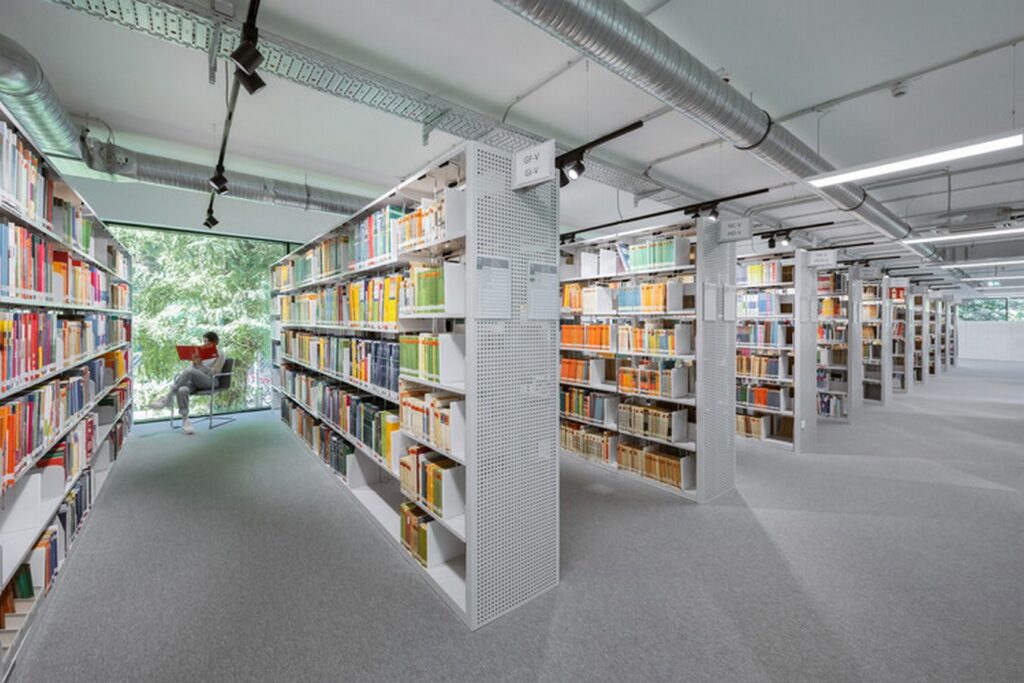
Sustainability at its Core: Energy Efficiency and Sufficiency
Sehw Architektur’s commitment to sustainability is evident in every aspect of the campus design. Through the integration of modern construction technologies and innovative lighting concepts, energy consumption is significantly reduced. By repurposing existing structures and minimizing resource consumption, the project exemplifies the principles of sufficiency, acknowledging the importance of responsible stewardship of resources. The campus serves as a model for sustainable construction projects, showcasing how heritage preservation and environmental sustainability can coalesce to create spaces that inspire and endure.
Conclusion: A Beacon of Innovation and Sustainability
In conclusion, the Georg-Eckert Campus stands as a testament to the transformative power of architecture. By seamlessly blending tradition with innovation and sustainability, Sehw Architektur has created a vibrant intellectual hub that honors the past while embracing the future. As a symbol of progress and environmental stewardship, the campus inspires a new generation of scholars and sets a precedent for sustainable urban development.

